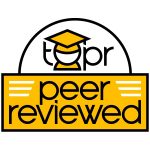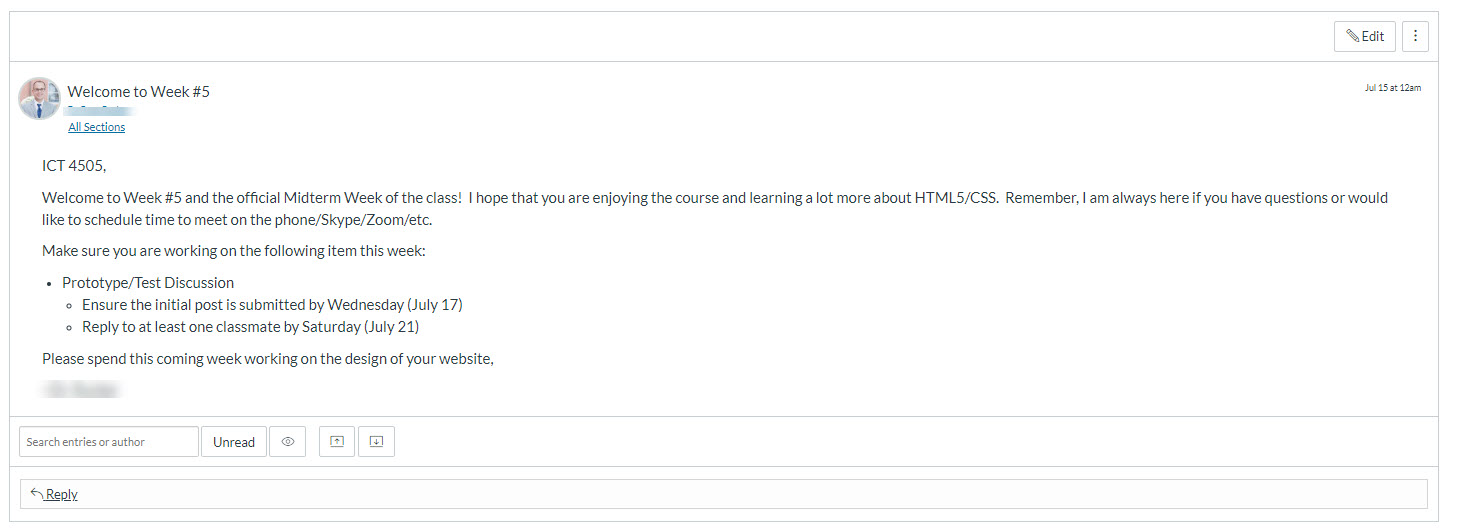Tags: Announcements, Content, Online, Peer-Reviewed Entry

Description
This strategy consists of sharing content-related announcements (either via email or through the Learning Management System) to help students see how topics being addressed at various points throughout the term are connected. This strategy is useful because online students value the clarity of information presented in the course (Sheridan, 2010), and courses that poorly transition content from one unit, topic, or module to the next often feel disjointed and/or confusing. This is especially true when students lack the ability to connect the information and content contained in one unit or module to the next. Failure to understand how the units connect and how the progression of topics connect can cause frustration on the student’s behalf and hinder learning (Darby & Lang, 2019). Helping students see these connections through explicit communication encourages them to see the relationship between prior content and new content and enhances their understanding of course topics as a whole.
Link to example artifact(s)
Announcements are often used to welcome students to the course, to guide them in completing the course requirements, and to give general feedback (Coates, 2007). At our institution, announcements are sent out at the beginning of each module or unit to communicate the transition of topics and course content. Announcements also serve to notify students of important steps, upcoming deadlines, and activities for the week. Announcements typically include information such as:
- Summary of last week’s learning engagements/activities
- Explanation of learning activities and topics build upon one another
- Connection of last week’s topics and course content to this week’s content
- Reiteration of classroom norms, procedures and/or expectations
- A week-specific to-do list for students
Helping students see how course concepts are connected from week to week helps reinforce learning, and providing guidance about course flow and structure ensures students are prepared for success in future weeks as well.


Link to scholarly reference(s)
Coates, J. (2007). Generation Y: The Millennial Generation. LERN Books.
Darby, F., & Lang, J. M. (2019). Small teaching online: applying learning science in online classes. San Francisco, CA: Jossey-Bass.
Koeller, M. (2012). From baby boomers to generation Y millennials: Ideas on how professors might structure classes for this media conscious generation. Journal of Higher Education Theory and Practice, 12(1), 77-82.
Sheridan, K., & Kelly, M.A. (2010). The indicators of instructor presence that are important to students in online courses. MERLOT Journal of Online Learning and Teaching, 6, 767-779. Retrieved from http://jolt.merlot.org/vol6no4/sheridan_1210.pdf.
Wang, S. (2011). Promoting student’s online engagement with communication tools. Journal of Educational Technology Development and Exchange, 4(1), 8.
Citation
Pares, N., Smith, M., & O'Grady, A. (2020). Using class announcements to make content connections across weeks or units. In A. deNoyelles, A. Albrecht, S. Bauer, & S. Wyatt (Eds.), Teaching Online Pedagogical Repository. Orlando, FL: University of Central Florida Center for Distributed Learning. https://topr.online.ucf.edu/using-class-announcements-to-make-content-connections-across-weeks-or-units/.Post Revisions:
- July 31, 2020 @ 13:30:25 [Current Revision]
- July 31, 2020 @ 13:30:25
- June 11, 2020 @ 01:30:35
- March 10, 2020 @ 14:53:14
- March 5, 2020 @ 19:01:43
- March 5, 2020 @ 19:00:13
- March 5, 2020 @ 18:59:42

